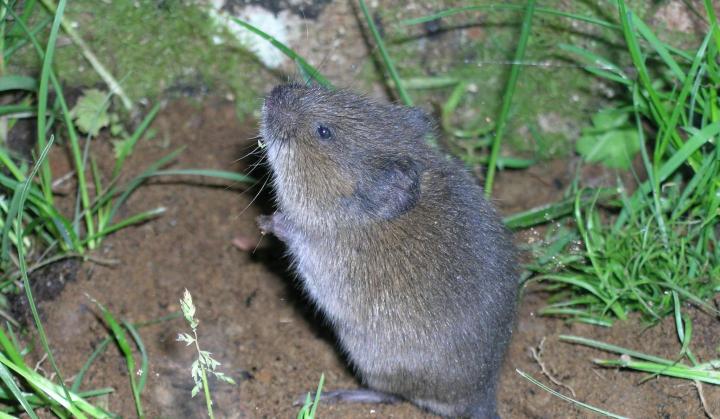Proven Vole Control Approaches to Protect Your Property
Proven Vole Control Approaches to Protect Your Property
Blog Article
Comprehensive Overview to Effective Vole Pest Control: Problem Identification and Therapy Approaches
In the realm of reliable bug control, vole infestations posture an one-of-a-kind obstacle that requires a tactical strategy. These tiny rodents, usually incorrect for computer mice, can ruin gardens, yards, and crops if left unattended. Recognizing the indications of vole existence and carrying out targeted treatment methods are important components of a successful parasite administration strategy. By checking out the subtleties of vole actions, comprehending vital indicators of invasion, and examining a range of control options, one can develop a thorough approach to deal with these elusive insects.
Comprehending Vole Behavior
Vole actions is identified by their delving behaviors and quick recreation rates, making them a challenging pest to regulate properly. Their fast reproductive rate more complicates control efforts, with ladies capable of producing numerous trashes in a solitary year, each consisting of a number of spawn.
Understanding vole habits is critical for effective bug control strategies. By determining their burrow areas, monitoring feeding areas, and carrying out targeted control approaches, such as trapping or habitat adjustment, vole problems can be managed efficiently.
Indications of Vole Problem

Prevention Strategies
Carrying out reliable prevention techniques is critical in minimizing vole invasions and securing plant life from their damaging feeding routines (vole control utah). To avoid vole invasions, it is crucial to begin by eliminating potential food sources and shelter. Keep lawn and plant life cut short, get rid of weeds and debris, and maintain a tidy garden or lawn to make the area less check out here attractive to voles. Installing barriers such as hardware cloth or underground fencing can likewise help prevent voles from going into certain areas. Furthermore, minimizing excess wetness by taking care of leaking pipes and guaranteeing appropriate drain can make the environment less hospitable for voles.
Consistently evaluating the residential or commercial property for signs of vole activity, such as runways and tunnel openings, is essential for very early detection and prompt activity. If vole activity is believed, take into consideration utilizing catches or repellents tactically positioned near their paths. Utilizing all-natural predators like snakes or owls can additionally assist maintain vole populations in check. By applying a combination of these avoidance home owners, techniques and garden enthusiasts can efficiently shield their vegetation from vole damage.
Non-Lethal Control Methods
To successfully take care of vole populations while focusing on gentle approaches, non-lethal control strategies provide functional options for lowering vole damages in yards and landscapes. One reliable approach is using physical obstacles such as equipment towel or cord mesh to protect vulnerable plants. These barriers can be buried at the very least 12 inches deep and bent at a 90-degree angle to prevent voles from burrowing underneath. Additionally, habitat modification can deter voles by reducing their chosen food sources and hiding spots. Maintaining a well-mowed grass, getting rid of particles, and maintaining plants trimmed can make the atmosphere less enticing to voles.

Lethal Control Options
One effective approach for addressing vole infestations in gardens and landscapes involves the tactical use of lethal control choices. When encountered with a serious vole invasion that non-lethal techniques have fallen short to have, applying deadly control steps ends up being vital. Generally, when utilizing dangerous control alternatives, it is essential to do so sensibly and in conformity with regional laws to successfully manage vole infestations.
Final Thought
In conclusion, effective vole pest control calls for a comprehensive understanding of vole habits, identification of indications of infestation, execution of avoidance approaches, and application of both non-lethal and deadly control methods. By incorporating these approaches, individuals can efficiently manage vole populations and protect their property from damage. It is essential to address vole invasions immediately to prevent additional concerns and minimize the influence on the surrounding atmosphere.
Given the complex passage systems and rapid recreation rates particular of voles, recognizing the indicators of vole infestation ends up being essential in efficient insect control. One of the main indicators of vole presence is the presence of surface read this post here paths or routes in yard or snow, usually regarding 1-2 inches large, developed as voles travel in between their burrows and food resources.To efficiently take care of vole populations while prioritizing humane methods, non-lethal control methods supply functional options for minimizing vole damage in gardens and landscapes.One reliable approach for addressing vole invasions in landscapes and gardens entails the calculated use of lethal control alternatives. vole control utah.In verdict, effective vole insect control needs an extensive understanding of vole actions, recognition of indicators of invasion, implementation of avoidance approaches, and usage of both dangerous and non-lethal control techniques
Report this page